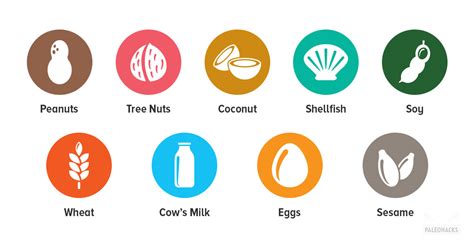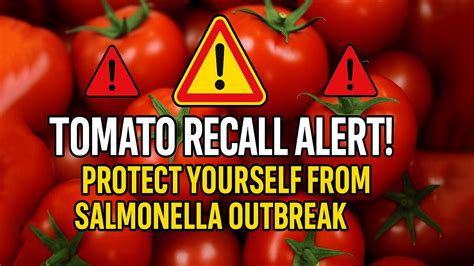
Food allergies are on the rise, and while genetics play a role, experts increasingly point to factors associated with modern lifestyles as significant contributors to this alarming trend.
The prevalence of food allergies has dramatically increased in recent decades, leaving researchers and healthcare professionals seeking to understand why our grandparents seemed less afflicted by these conditions. The emerging consensus highlights that changes in our environment, diet, and hygiene practices are likely fueling this surge, not just inherited predispositions.
“We are seeing a dramatic rise in food allergies,” says Dr. Corinne Keet, a professor of pediatrics at Johns Hopkins University School of Medicine, cited in numerous research papers on the subject. This observation underscores the urgency to investigate the environmental elements that are exacerbating genetic vulnerabilities.
One significant area of focus is the hygiene hypothesis, which posits that reduced exposure to infections and microbes early in life may impair the development of a robust immune system. In today’s sanitized environments, children encounter fewer bacteria and parasites than previous generations, potentially leading their immune systems to overreact to harmless substances like food proteins. “Our immune systems evolved to deal with infections, and when they don’t have infections to deal with, they sometimes turn on things that are not infections, like foods,” explains Dr. Keet.
Another crucial aspect is the Western diet, characterized by highly processed foods, reduced fiber intake, and increased consumption of refined sugars and unhealthy fats. This dietary shift can disrupt the gut microbiome, the complex community of microorganisms residing in our digestive tract. A healthy microbiome is essential for immune system regulation and tolerance to food antigens. The modern diet, however, often lacks the diversity and nutrients needed to support a balanced gut ecosystem.
Furthermore, changes in infant feeding practices may also contribute to the rise in food allergies. Delayed introduction of allergenic foods like peanuts, eggs, and dairy was once a common recommendation, but current guidelines advocate for early introduction, typically between 4 to 6 months of age. This shift is based on evidence suggesting that early exposure can help build tolerance and prevent the development of allergies. However, inconsistencies in implementation and other confounding factors make it difficult to fully assess the impact of these changing practices.
Environmental pollutants and additives in food production are also under scrutiny. Exposure to chemicals like bisphenol A (BPA) and phthalates, found in plastics and food packaging, has been linked to immune system dysfunction and increased susceptibility to allergies. Similarly, the use of pesticides and herbicides in agriculture may alter the composition of food proteins, making them more likely to trigger allergic reactions.
The rising rates of Cesarean sections and antibiotic use further complicate the picture. C-sections can disrupt the infant’s initial exposure to beneficial bacteria from the mother’s vaginal microbiome, while antibiotics can indiscriminately kill both harmful and beneficial bacteria in the gut, potentially leading to long-term immune dysregulation.
“It’s a multifactorial problem,” emphasizes Dr. Ruchi Gupta, a professor of pediatrics at Northwestern University Feinberg School of Medicine, and the director of the Center for Food Allergy & Asthma Research. “There’s not one single cause, but a combination of genetic predisposition and environmental factors that are contributing to the increase in food allergies.”
Understanding the complex interplay between genes and environment is crucial for developing effective strategies to prevent and manage food allergies. Research efforts are focused on identifying specific environmental factors that pose the greatest risk, as well as developing interventions to promote immune tolerance and gut health. These interventions may include dietary modifications, targeted probiotic supplementation, and strategies to minimize exposure to environmental pollutants.
The Hygiene Hypothesis: A Closer Look
The hygiene hypothesis, first proposed by epidemiologist David Strachan in 1989, suggests that reduced exposure to infections early in life can lead to an increased risk of allergic diseases. Strachan observed that children from larger families were less likely to develop hay fever, suggesting that exposure to more siblings and their associated germs could provide a protective effect.
In modern societies, improvements in sanitation, hygiene, and access to vaccines have dramatically reduced the burden of infectious diseases. While these advancements have undoubtedly improved public health, they may also have unintended consequences for the developing immune system.
The immune system is designed to distinguish between harmful pathogens and harmless substances. Early exposure to a diverse range of microbes helps to “train” the immune system to recognize and tolerate non-threatening antigens, such as food proteins. When the immune system lacks sufficient exposure to microbes, it may become more prone to overreact to harmless substances, leading to allergic reactions.
Several lines of evidence support the hygiene hypothesis. Studies have shown that children who attend daycare, live on farms, or have pets are less likely to develop allergies. These environments expose children to a greater variety of microbes, which may help to promote immune tolerance.
However, the hygiene hypothesis is not without its critics. Some researchers argue that it is an oversimplification of a complex phenomenon. They point out that not all infections are protective against allergies, and some infections may even increase the risk of allergic diseases.
Furthermore, the hygiene hypothesis does not fully explain the rise in food allergies in developed countries. Other factors, such as changes in diet and environmental exposures, are also likely to play a significant role.
Despite its limitations, the hygiene hypothesis remains a valuable framework for understanding the complex relationship between the immune system and the environment. It highlights the importance of early microbial exposure for the development of a healthy and balanced immune system.
The Role of the Gut Microbiome
The gut microbiome is a complex community of microorganisms, including bacteria, viruses, fungi, and archaea, that reside in the digestive tract. This microbial ecosystem plays a crucial role in human health, influencing everything from digestion and nutrient absorption to immune system regulation and brain function.
A healthy gut microbiome is characterized by a diverse and balanced community of microorganisms. This diversity allows the gut to perform a wide range of functions, including breaking down complex carbohydrates, producing essential vitamins, and protecting against harmful pathogens.
The modern Western diet, with its high content of processed foods, refined sugars, and unhealthy fats, can disrupt the gut microbiome, leading to a condition known as dysbiosis. Dysbiosis is characterized by a reduction in microbial diversity and an imbalance in the composition of the gut microbiome.
Dysbiosis has been linked to a wide range of health problems, including inflammatory bowel disease (IBD), obesity, type 2 diabetes, and allergies. In the context of food allergies, dysbiosis can impair the gut’s ability to tolerate food antigens, leading to an increased risk of allergic reactions.
Several mechanisms may explain the link between dysbiosis and food allergies. First, dysbiosis can disrupt the gut barrier, the protective lining of the digestive tract. A compromised gut barrier allows food antigens to leak into the bloodstream, where they can trigger an immune response.
Second, dysbiosis can alter the production of short-chain fatty acids (SCFAs), which are produced by the fermentation of dietary fiber in the gut. SCFAs, such as butyrate, acetate, and propionate, have anti-inflammatory properties and can help to regulate the immune system. A reduction in SCFA production due to dysbiosis can impair immune tolerance and increase the risk of allergies.
Third, dysbiosis can affect the development and function of immune cells in the gut. The gut-associated lymphoid tissue (GALT) is the largest immune organ in the body and plays a crucial role in maintaining immune tolerance to food antigens. Dysbiosis can disrupt the development and function of immune cells in the GALT, leading to an increased risk of allergic reactions.
Strategies to restore and maintain a healthy gut microbiome include dietary modifications, such as increasing fiber intake and reducing processed foods, as well as probiotic and prebiotic supplementation. Probiotics are live microorganisms that can help to replenish beneficial bacteria in the gut, while prebiotics are non-digestible fibers that can promote the growth of beneficial bacteria.
Infant Feeding Practices and Early Allergen Introduction
For many years, pediatricians advised parents to delay the introduction of allergenic foods to infants, based on the belief that early exposure could increase the risk of developing allergies. However, this recommendation has been challenged by recent research.
Studies have shown that early introduction of allergenic foods, typically between 4 to 6 months of age, can actually help to prevent the development of allergies. This approach is based on the concept of oral tolerance, which suggests that early exposure to food antigens can “train” the immune system to tolerate these antigens, reducing the risk of allergic reactions.
The Learning Early About Peanut Allergy (LEAP) study, published in 2015, provided compelling evidence for the benefits of early peanut introduction. The study found that infants at high risk of developing peanut allergy who consumed peanut-containing foods from an early age were significantly less likely to develop peanut allergy by age 5, compared to infants who avoided peanut consumption.
Based on the findings of the LEAP study and other research, the National Institute of Allergy and Infectious Diseases (NIAID) has issued guidelines recommending early introduction of peanut-containing foods to infants at high risk of developing peanut allergy. These guidelines also recommend early introduction of other allergenic foods, such as eggs, dairy, and tree nuts, to all infants, regardless of their risk of developing allergies.
However, the implementation of early allergen introduction guidelines can be challenging. Parents may be hesitant to introduce allergenic foods to their infants, especially if they have a family history of allergies. Furthermore, it can be difficult to determine which infants are at high risk of developing allergies.
Healthcare professionals play a crucial role in educating parents about the benefits of early allergen introduction and providing guidance on how to safely introduce allergenic foods to their infants. It is important to start with small amounts of allergenic foods and to monitor infants for any signs of allergic reactions.
While early allergen introduction has shown promise in preventing food allergies, it is not a foolproof strategy. Some infants may still develop allergies despite early exposure to allergenic foods. Further research is needed to identify other factors that contribute to the development of food allergies and to develop more effective prevention strategies.
Environmental Pollutants and Food Additives
Environmental pollutants and food additives are increasingly recognized as potential contributors to the rise in food allergies. Exposure to chemicals like bisphenol A (BPA), phthalates, and pesticides has been linked to immune system dysfunction and increased susceptibility to allergies.
BPA and phthalates are endocrine-disrupting chemicals that are commonly found in plastics, food packaging, and personal care products. These chemicals can interfere with the normal function of hormones, which can have a wide range of adverse health effects, including immune system dysregulation.
Studies have shown that exposure to BPA and phthalates during pregnancy and early childhood can increase the risk of developing allergies. These chemicals may affect the development of the immune system, making it more prone to overreact to harmless substances like food proteins.
Pesticides are chemicals used to control pests in agriculture. Exposure to pesticides has also been linked to immune system dysfunction and increased susceptibility to allergies. Pesticides may alter the composition of food proteins, making them more likely to trigger allergic reactions.
Food additives, such as artificial colors, flavors, and preservatives, are also under scrutiny as potential contributors to the rise in food allergies. Some studies have suggested that these additives may trigger allergic reactions in susceptible individuals. However, more research is needed to confirm these findings.
Strategies to minimize exposure to environmental pollutants and food additives include choosing organic foods, using BPA-free and phthalate-free products, and avoiding processed foods that contain artificial colors, flavors, and preservatives.
Cesarean Sections and Antibiotic Use
The rising rates of Cesarean sections and antibiotic use have also been implicated in the rise in food allergies. C-sections can disrupt the infant’s initial exposure to beneficial bacteria from the mother’s vaginal microbiome, while antibiotics can indiscriminately kill both harmful and beneficial bacteria in the gut.
During a vaginal birth, the infant is exposed to a diverse range of bacteria from the mother’s vaginal microbiome. This exposure helps to colonize the infant’s gut with beneficial bacteria, which play a crucial role in immune system development and tolerance to food antigens.
C-sections bypass this natural process of microbial colonization, potentially leading to a less diverse and balanced gut microbiome. This can increase the risk of developing allergies.
Antibiotics are commonly used to treat bacterial infections. While antibiotics can be life-saving, they can also have unintended consequences for the gut microbiome. Antibiotics can indiscriminately kill both harmful and beneficial bacteria in the gut, disrupting the delicate balance of the microbial ecosystem.
Antibiotic use during pregnancy and early childhood has been linked to an increased risk of developing allergies. This may be due to the disruption of the gut microbiome, which can impair immune tolerance and increase the risk of allergic reactions.
Strategies to mitigate the impact of C-sections and antibiotic use on the gut microbiome include vaginal seeding (transferring vaginal microbes to the infant after a C-section) and probiotic supplementation. However, more research is needed to determine the effectiveness of these interventions.
Conclusion: A Multifaceted Problem
The rise in food allergies is a complex and multifaceted problem with no single cause. While genetics play a role, environmental factors, such as changes in diet, hygiene practices, and environmental exposures, are increasingly recognized as significant contributors to this alarming trend.
Understanding the complex interplay between genes and environment is crucial for developing effective strategies to prevent and manage food allergies. Research efforts are focused on identifying specific environmental factors that pose the greatest risk, as well as developing interventions to promote immune tolerance and gut health. These interventions may include dietary modifications, targeted probiotic supplementation, strategies to minimize exposure to environmental pollutants, and promoting natural childbirth and judicious antibiotic use. By addressing these factors, we can hope to reverse the rising tide of food allergies and improve the health and well-being of future generations.
Frequently Asked Questions (FAQ)
-
Why are food allergies more common now than they were in the past?
Food allergies are increasingly prevalent due to a combination of factors, including genetics and lifestyle changes. Modern lifestyles characterized by altered diets with processed foods, reduced exposure to microbes, increased environmental pollution, and changes in infant feeding practices have contributed significantly to the rise in allergies. “There’s not one single cause, but a combination of genetic predisposition and environmental factors that are contributing to the increase in food allergies,” explains Dr. Ruchi Gupta.
-
What is the hygiene hypothesis and how does it relate to food allergies?
The hygiene hypothesis suggests that reduced exposure to infections and microbes early in life may impair the development of a robust immune system, leading to an increased risk of allergic diseases. Modern sanitized environments reduce encounters with bacteria and parasites, causing the immune system to overreact to harmless substances like food proteins. “Our immune systems evolved to deal with infections, and when they don’t have infections to deal with, they sometimes turn on things that are not infections, like foods,” states Dr. Keet.
-
How does the Western diet affect the risk of developing food allergies?
The Western diet, characterized by highly processed foods, reduced fiber intake, and increased consumption of refined sugars and unhealthy fats, can disrupt the gut microbiome, which is essential for immune system regulation and tolerance to food antigens. This dietary shift often lacks the diversity and nutrients needed to support a balanced gut ecosystem, increasing susceptibility to allergies.
-
What is the current recommendation for introducing allergenic foods to infants?
Current guidelines recommend the early introduction of allergenic foods, typically between 4 to 6 months of age. This shift is based on evidence suggesting that early exposure can help build tolerance and prevent the development of allergies. However, it’s important to consult with a healthcare professional for personalized guidance.
-
What can be done to minimize the risk of developing food allergies?
To minimize the risk of developing food allergies, it’s essential to adopt a healthy lifestyle by consuming a balanced diet rich in fiber and whole foods, minimizing exposure to environmental pollutants, promoting a healthy gut microbiome through diet and, when appropriate, probiotics, and following current guidelines on early allergen introduction for infants. Further research is continuously being conducted to uncover effective prevention strategies.









